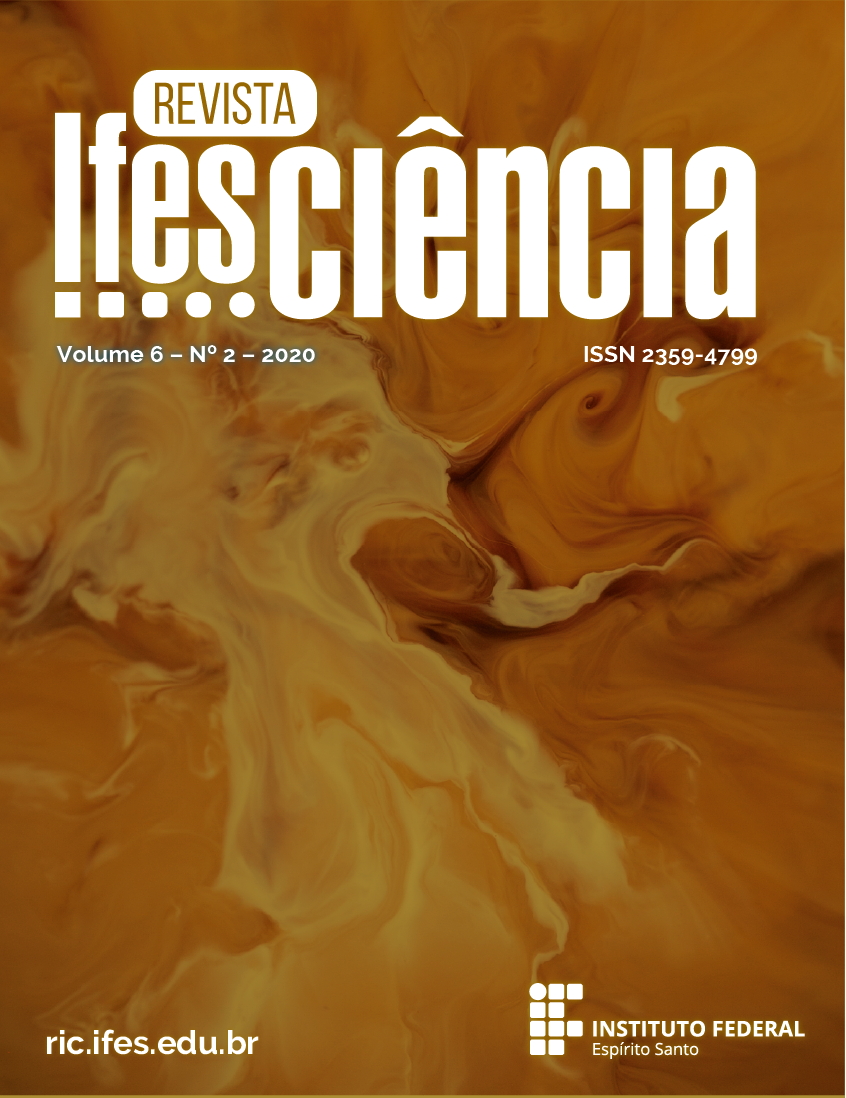CARACTERIZAÇÃO MICROESTRUTURAL E PROPRIEDADES FÍSICAS E MECÂNICAS DE ARGILAS DA REGIÃO NORTE DO ESPÍRITO SANTO
DOI:
https://doi.org/10.36524/ric.v6i2.527Keywords:
Argilas para cerâmica vermelha, Propriedades mineralógicas, Propriedades físicas e mecânicasAbstract
This work aimed to determine mineralogical, physical and mechanical properties of clays from the north of Espirito Santo. Two clays as received (samples A and B) and two traces (2A-5B – sample C; and 3A-4B – sample D) sere analyzed. X rays fluorescence, scanning electronic microscopy, X rays diffraction, granulometric analysis, differential thermal analysis, thermogravimetric analysis and Atterberg limits were used to determine the mineralogical properties of samples. Water absorption, apparent porosity, apparent specific gravity, linear retraction after firing and ultimate compressive strength were also evaluated using specimens with diameter of 12 mm and height of 24 mm, made by uniaxial pressing, dried at 110°C for 24 h and fired at 850°C, 900°C and 950°C, with 5°C/min and staying at those temperatures for 2 h. Mineralogical properties results for samples A and B presented in accordance to literature. Physical and mechanical properties results pointed to the choice of sample D to use as raw material to make bricks.
Downloads
Published
Issue
Section
License
Copyright (c) 2020 Revista Ifes Ciência

This work is licensed under a Creative Commons Attribution-NonCommercial-NoDerivatives 4.0 International License.
Autores que publicam nesta revista concordam com os seguintes termos:
- Autores mantém os direitos autorais e concedem à revista o direito de primeira publicação, com o trabalho simultaneamente licenciado sob a Licença Creative Commons Attribution que permite o compartilhamento do trabalho com reconhecimento da autoria e publicação inicial nesta revista.
b. Autores têm permissão e são estimulados a publicar e distribuir seu trabalho online (ex.: em repositórios institucionais ou na sua página pessoal) a qualquer ponto antes ou durante o processo editorial, já que isso pode gerar alterações produtivas, bem como aumentar o impacto e a citação do trabalho publicado (Veja O Efeito do Acesso Livre).



